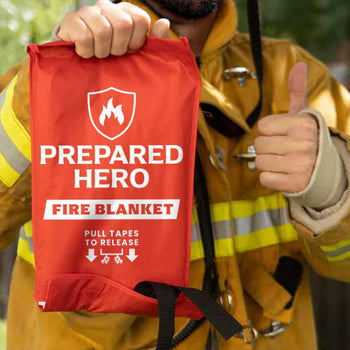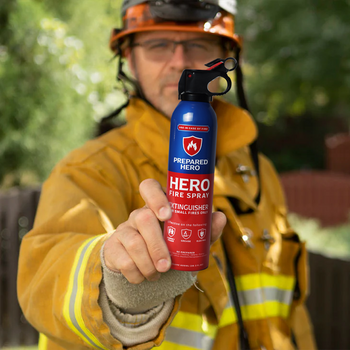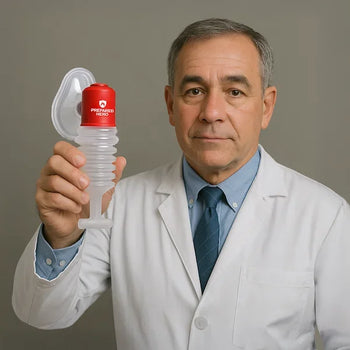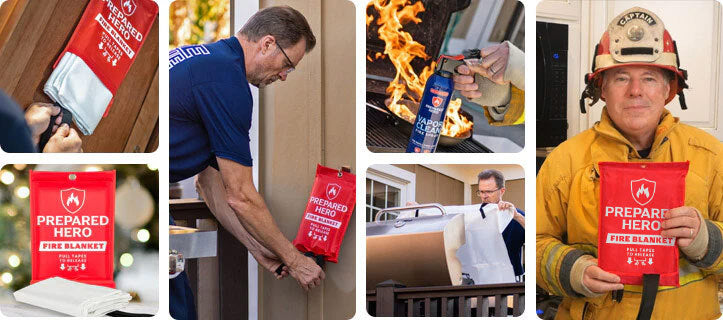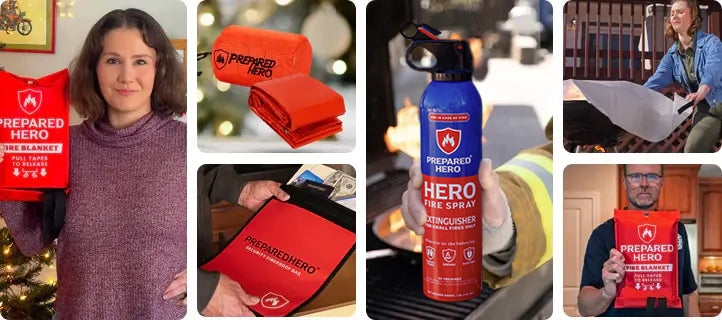Where you put your smoke detectors matters just as much as installing them. Proper placement makes sure they can detect...
Fire extinguishers are essential safety tools in homes, offices, and cars. But while they’re great at stopping fires, they leave behind a powdery mess that raises another question: what’s in that stuff? And more importantly, is fire extinguisher powder toxic? Is it safe to inhale it? Find out the answers to these questions below.
What Do Fire Extinguishers Contain?

The substances inside fire extinguishers depend on the type, and each one is made for a specific kind of fire.
Dry chemical or ABC fire extinguishers use powders like monoammonium phosphate, sodium bicarbonate, potassium bicarbonate, or a combination of both. They work on many types of fires, but the powder can be irritating if you breathe it in.
On the other hand, CO2 fire extinguishers release carbon dioxide. They work by pushing oxygen away from the fire, which stops it from burning. They work against Class B (flammable liquid and gas) and Class C (electrical equipment) fires. They also don’t leave a mess, but avoid using them in tight spaces without ventilation.
As the term suggests, water fire extinguishers are made of water. They cool things down and work on Class A fires caused by common solid materials like paper, wood, and plastic. Never use them on electrical or grease fires.
How Do Powder Fire Extinguishers Work?
Powder fire extinguishers work by spraying a fine, dry powder that quickly smothers flames. The powder is usually made from monoammonium phosphate, sodium bicarbonate, potassium bicarbonate, or a mix of the three. When you press the handle, the extinguisher releases the powder under pressure, usually from nitrogen gas.
Once sprayed, the powder spreads across the burning area and forms a layer over the fuel. This layer blocks oxygen (an element of the fire triangle) from reaching the fire. Since fire needs oxygen to keep burning, cutting off the supply stops it in its tracks. On top of that, the powder interrupts the chemical reactions happening in the flames, which helps kill the fire faster.
This method also works well on electrical fires because the powder doesn’t conduct electricity. It’s safe to use on wires, outlets, or appliances without risking a shock. The dry powder can also help prevent fires from reigniting by covering hot surfaces and absorbing heat.
Is Fire Extinguisher Powder Toxic?

Fire extinguisher powder isn’t toxic, but that doesn’t mean it’s safe. The powder in dry chemical extinguishers, usually monoammonium phosphate or sodium bicarbonate, can cause irritation if you breathe it in, especially in small or enclosed spaces. You might end up coughing, feeling short of breath, or getting a headache. These symptoms usually go away after getting some fresh air. However, they could affect people with respiratory issues more severely.
Plus, fire extinguisher powder that gets on your skin or eyes might sting or itch. Just rinse it off with water. Most people feel better after. Ingesting a tiny bit probably won’t hurt, but it can upset your stomach or make your throat sore. The powder also leaves a dusty residue that’s annoying to clean and shouldn’t get into water drains. So, wear gloves and a mask if you’re cleaning it up.
While fire extinguisher powder is generally not poisonous, you should treat it with care. Avoid breathing it in, don’t touch it too much, and clean up right away after using the fire extinguisher.
How Dangerous Is Fire Extinguisher Powder?
Fire extinguisher powder can be dangerous if you inhale too much, especially in small or poorly ventilated spaces. Breathing it in can irritate your throat, nose, and lungs. A large amount getting into your system makes it hard to breathe and usually requires a hospital visit. People with asthma and other lung issues should be extra careful, too.
Plus, touching the powder isn’t usually serious, but it can irritate your skin and eyes. If that happens, rinse the area with water right away. Wearing gloves and a dust mask while cleaning up is a smart idea. Avoid getting the residue into drains, as many powders contain chemicals that aren’t great for the environment.
In addition, you shouldn’t eat it. Swallowing a little won’t hurt most people, but it could make your throat sore or upset your stomach. Fire extinguisher powder is made to be safe enough for home use, but it’s not meant to be breathed in, touched too much, or eaten. Use it when needed and clean it up afterwards.
Is Fire Extinguisher Powder Harmful to Breathe?

Fire extinguisher powder is harmful to breathe in large amounts. It can irritate your nose, throat, and lungs. You might start coughing or feel short of breath, especially if you’re in a small space with poor ventilation. People with asthma and other respiratory issues should be extra careful, as the powder can make things worse for them.
Even if you’re just around it briefly, the fine dust can still cause mild irritation. Your eyes might sting, or your skin might feel itchy or red if it comes into contact with the powder.
If you’ve used a powder fire extinguisher, clean up the powder as soon as possible. Use gloves and avoid breathing it in while cleaning. While it won’t poison you, the powder is definitely something you don’t want lingering in the air or on your skin.
Is Fire Extinguisher Powder Toxic if Eaten?
Fire extinguisher powder can be toxic when eaten in large amounts. If you accidentally get some on your food or in your mouth, you’re probably fine. Still, swallowing more than a tiny amount can irritate your throat and stomach. You might feel some nausea or get an upset stomach, especially with dry chemical or foam extinguishers.
Some types of fire extinguishers, like wet chemical or foam ones, contain ingredients that can be harmful if ingested in larger amounts.
While a little bit won’t likely hurt you, extinguisher powder is not meant to be eaten. If you or someone else eats a noticeable amount, rinse your mouth and check in with a doctor or poison control.
Is Fire Extinguisher Residue Harmful?

Fire extinguisher residue isn’t highly toxic, but it can be irritating and cause problems if you’re not careful. Extinguisher residue that touches your skin might cause itching or redness. Plus, getting it in your eyes can sting and make them water. Inhaling the dust, especially in a small or poorly ventilated space, can cause coughing or shortness of breath.
Some types of powder can also harm electronics. If you don’t clean it up quickly, it might corrode sensitive parts. While CO2 extinguishers don’t leave residue, dry chemical and foam ones do.
If you’re cleaning up after using one, wear gloves, eye protection, and a mask. Ventilate the area well. Don’t wait too long to clean it up, especially if the powder landed on electronics or kitchen surfaces. Depending on the extinguisher type, different cleaning methods work better, like diluted alcohol or vinegar.
Is Fire Extinguisher Powder Toxic to Dogs?
Fire extinguisher powder isn’t highly toxic to dogs, but it can still cause problems. The powder in ABC extinguishers can irritate a dog’s skin, eyes, and nose. If your dog breathes it in, it might start coughing or sneezing. It could even have trouble breathing if it has asthma or other respiratory issues.
If your pup gets the powder on its fur, rinse it off with water right away. Keep your dog away from the area while you’re using and cleaning up the extinguisher. Then, use a vacuum to clean loose powder and a mild vinegar or alcohol solution for residue.
Contact the vet if your dog shows signs like red skin, irritated eyes, or unusual breathing. If it actually eats the powder, don’t wait. Take it to the vet immediately. While extinguisher powder is not deadly in small amounts, it can still harm your pets.
How Do You Clean Up After a Dry Powder Fire Extinguisher?

Cleaning up after using a dry powder fire extinguisher doesn’t have to be complicated. Here’s how to do it:
- Sweep or vacuum up as much powder as possible. Then, put the powder in a plastic bag and seal it. Doing this helps reduce the mess.
- Mix 50% isopropyl alcohol with 50% warm water. Spray it on the affected area to break up the chemicals.
- Let it sit for about 5 minutes, then rinse with warm water to clean it off.
- If the fire extinguisher contains chemicals like sodium bicarbonate and potassium bicarbonate, mix 2% vinegar with 98% hot water. Spray and let it sit for five minutes before rinsing.
- Wipe down the surface with a damp cloth to finish cleaning.
Powder Fire Extinguisher Alternatives
While powder fire extinguishers help a lot, they can be expensive, heavy, and hard to store. They might also contain harmful chemicals and leave a mess that’s hard to clean up.

A fire spray is an easy-to-use, lightweight, and affordable alternative to powder fire extinguishers. Prepared Hero’s fire spray is also biodegradable and non-toxic. Unlike a fire extinguisher, you can safely use it around your family and pets.
Here’s a table summarizing the differences between Prepared Hero’s fire spray and a regular powder fire extinguisher:
| Hero Fire Spray | Regular Fire Extinguisher |
| Lightweight, easy to carry | Heavy, hard to carry |
| Easy to store | Needs more space for storage |
| Can put out all types of fire at home | Can only put out specific types of fire |
| 100% biodegradable | Mostly made of non-biodegradable materials |
| Non-toxic | Toxic |
| Easy to clean | Hard to clean |
| Safe for kids and pets | Not safe for kids and pets |
Another alternative is a fire blanket, which depletes the fire’s oxygen supply. By doing this, it puts out small fires in seconds. It also doesn’t leave a mess because it simply covers the fire.

Unlike fire extinguishers, Prepared Hero’s fire blanket doesn’t expire. You can reuse it as many times as you want as long as it’s not damaged. Plus, you can use it to save someone on fire.
Here’s a table summarizing the differences between Prepared Hero’s fire blanket and a regular fire extinguisher:
| Prepared Hero’s Fire Blanket | Regular Fire Extinguisher |
| Lightweight, easy to carry | Heavy, hard to carry |
| Affordable | Expensive |
| Doesn’t expire | Expires |
| Easy to store | Needs more space for storage |
| Non-toxic | Toxic |
| Doesn’t leave a mess | Leaves a mess |
| Safe for kids and pets | Not safe for kids and pets |
| Can be used on humans | Can’t be sprayed on humans |
Conclusion
While fire extinguisher powder isn’t toxic in general, it’s still harmful. It can irritate your lungs, skin, and eyes, especially in large amounts and small spaces. So use it when needed, and clean it up properly. Just treat it with a little caution and respect, and you’ll be fine.
Do you want reliable, easy-to-use, and affordable tools to put out small fires before they spread? Check out Prepared Hero’s fire prevention tools here, and get up to 51% off on certain items. Stay prepared, hero!


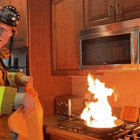 Fire
Fire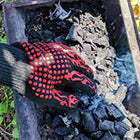 Safety
Safety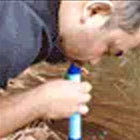 Survival
Survival Protection
Protection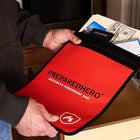 New
New
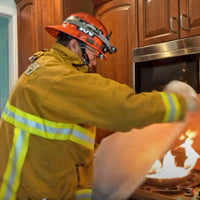 Fire
Fire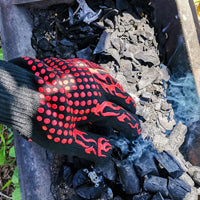 Safety
Safety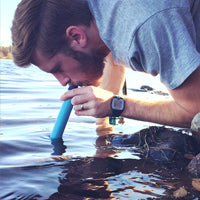 Survival
Survival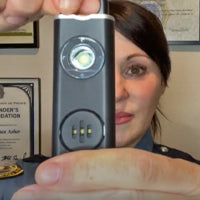 Protection
Protection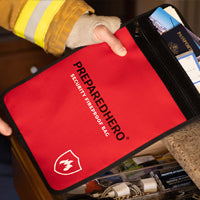 New
New
